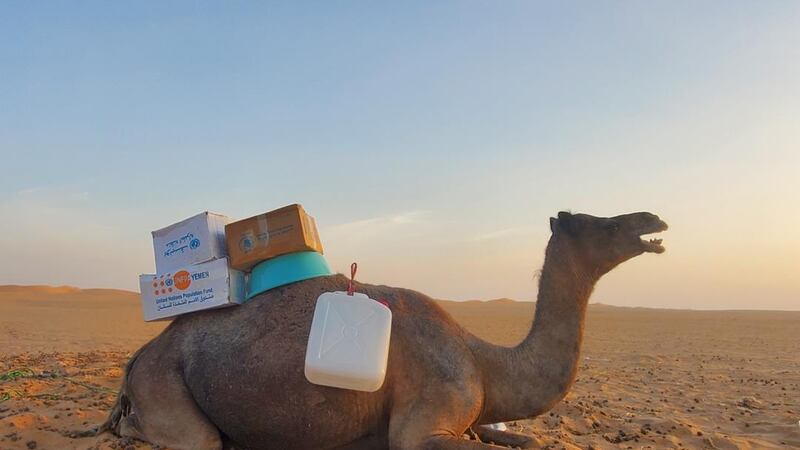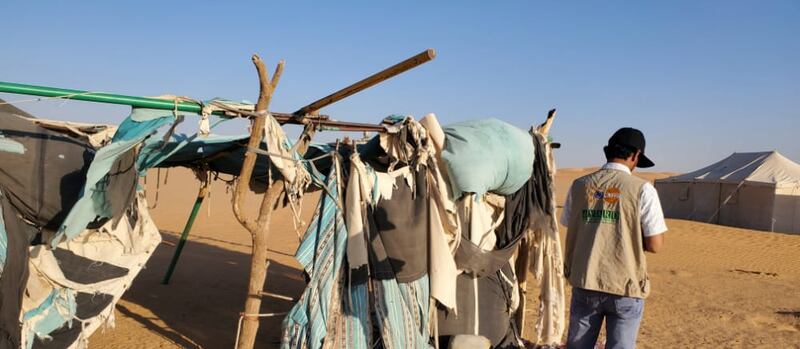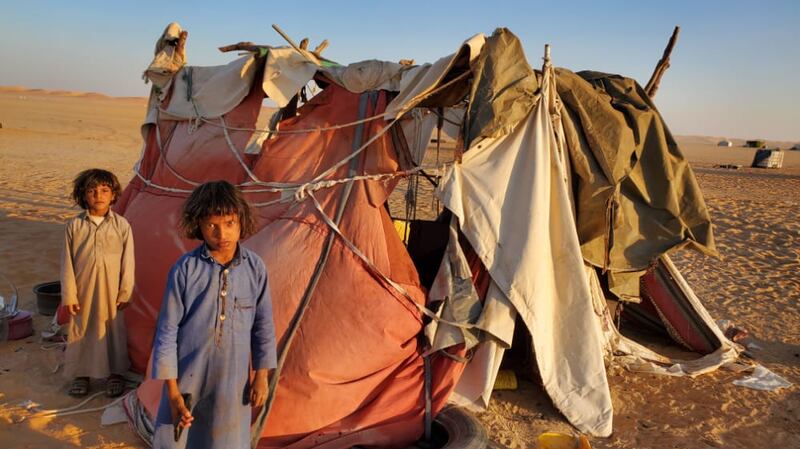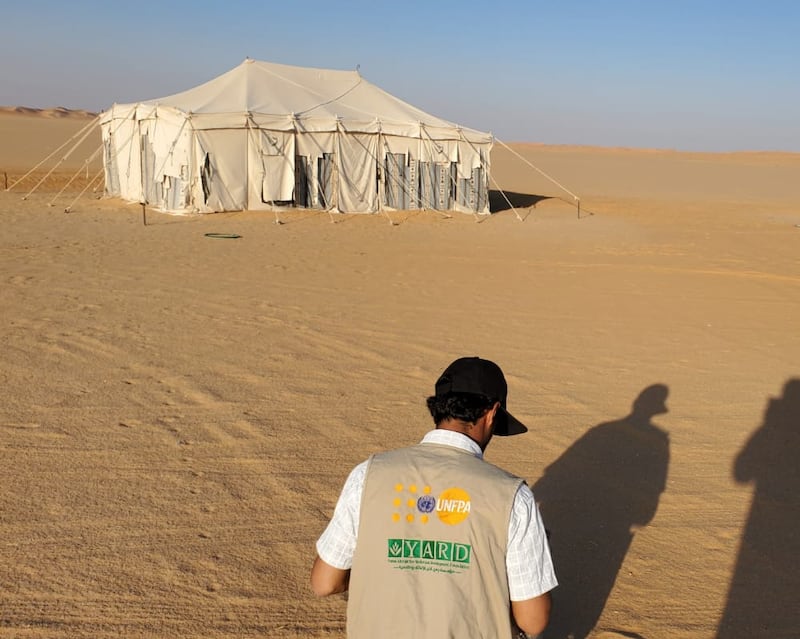More than 2,000 families have been displaced since fighting between Houthi rebels and the Saudi-led coalition in Yemen’s flashpoint province of Marib reignited at the start of 2021.
Yemenis of all ages have been left homeless. For some of those displaced in the latest round of fighting, this is not the first time.
Saeed Ahmed Salim Al Ashouar, 71, has a family of 16. He has been displaced for a second time.
“For three continuous days, we travelled to escape the fighting, fearing for our safety,” he said. “Now we live in houses made of wooden rods. Other people, too. We have nothing.”
With resources so scarce, there is a risk that dealing with illness or emergencies could be fatal.
“One of our houses caught fire while we were cooking,” he said. “Many things in the house were destroyed, including essentials, blankets and other things we use to keep warm.”
Five people from his family share a single blanket to fight the winter cold.
Thousands of displaced families in Yemen lack shelter
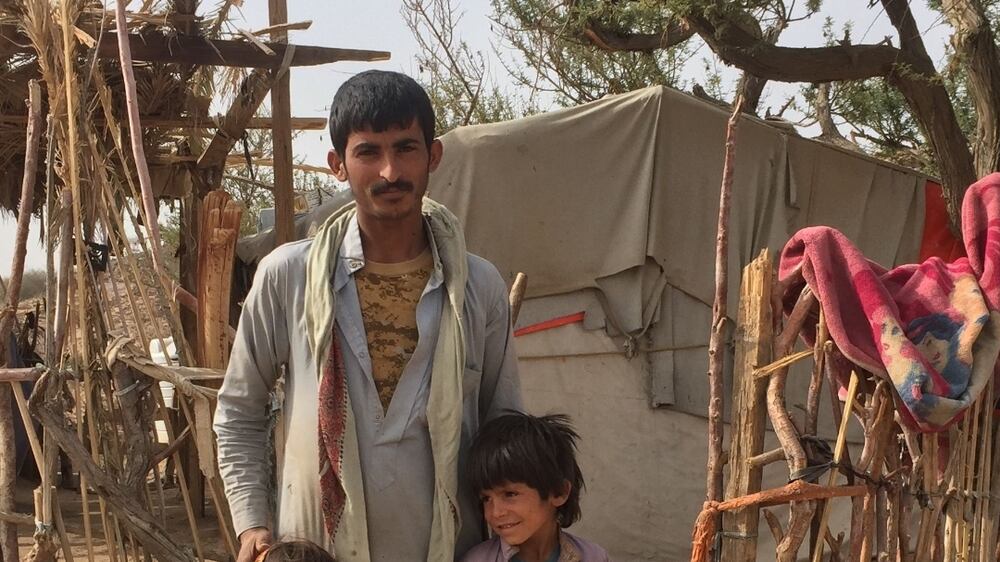
Aid on camelback
Mr Al Ashouar is one of thousands whose lives have been upended by the war, forced to seek refuge in Yemen’s remotest deserts.
He and countless others rely on camels and donkeys to transport aid between houses over difficult desert terrain and long distances.
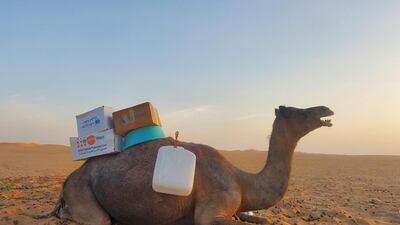
Financed by the European Union’s Humanitarian Aid operation, the UN Population Fund (UNFPA) supplies some of the assistance.
“It took us more than six to eight hours to reach some of the areas by car to provide them with assistance,” the UNFPA’s Ghamdan Mofarreh told The National.
Without phone coverage, satellite imagery or internet, not everybody in need can be found.
The UNFP works with local partners including the Yemen Alkhair for Relief and Development Foundation (Yard) to distribute aid.
“Many of the displaced live in tents. Their only source is livestock, but even that was impacted because of their displacement and the scarcity of grazing grounds,” Yard executive director Jamal Bahaj told The National.
“The closest place to shop for supplies is 300 kilometres away, through a rough road of high dunes. It is difficult to reach except by pick-up truck.”
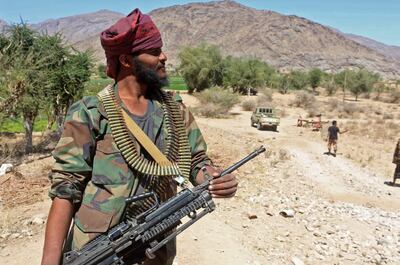
Drinking water supplies are 10 to 20km away, along a path mired in danger.
“There are unsafe routes with landmines between Al Harg and Al Yattamah (where some supplies are) as well as active front lines,” said Mr Bahaj.
The coalition has made significant gains in recent days in Marib, which could lead to further victories in the north of the country, where the rebels have a stronghold.
However, civilians are still bearing the brunt of the violence. Five people, including at least three civilians, were killed on Wednesday and 23 others injured when Houthi rebels fired a ballistic missile at Marib, a medical source said.
More than four million people have been displaced in Yemen since the war escalated in 2015 after the Houthi rebels took over the capital Sanaa, prompting an intervention by the Saudi-led coalition to support the internationally recognised government.
